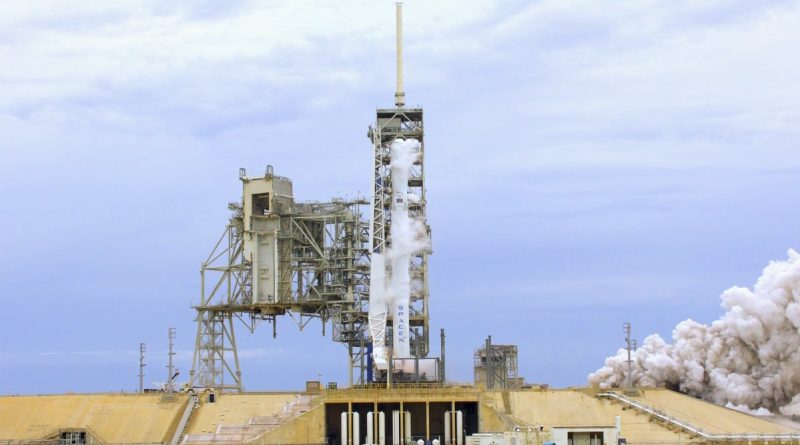Flight-Proven Falcon 9 checks off Static Fire Test ahead of Monday Liftoff with BulgariaSat-1
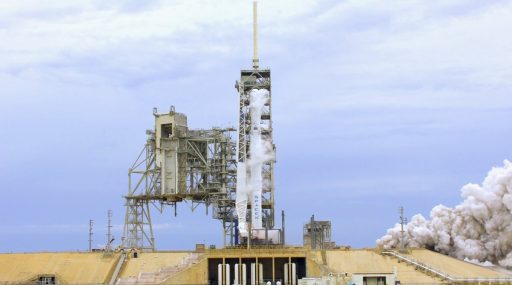
SpaceX successfully test fired a previously used Falcon 9 rocket atop its Kennedy Space Center Launch Pad on Thursday in advance of liftoff on Monday with the first commercial Bulgarian communications satellite.
The rocket’s refurbished first stage, which first flew in January on a heavy-haul into Low Earth Orbit from California, fired up its nine Merlin 1D main engines at 22:25 UTC, 6:25 p.m. local time for SpaceX’s routine Static Fire test that serves as an end to end exercise of all rocket and launch pad hardware prior to launch day.
Quick-look analysis of the hold-down test showed the firing reached its planned seven-second duration and more in-depth reviews are on tap over the coming days while Falcon 9 will be moved back into its hanger to receive its payload to return to the pad for a launch attempt on Monday, targeting a two-hour window opening around 18:10 UTC.
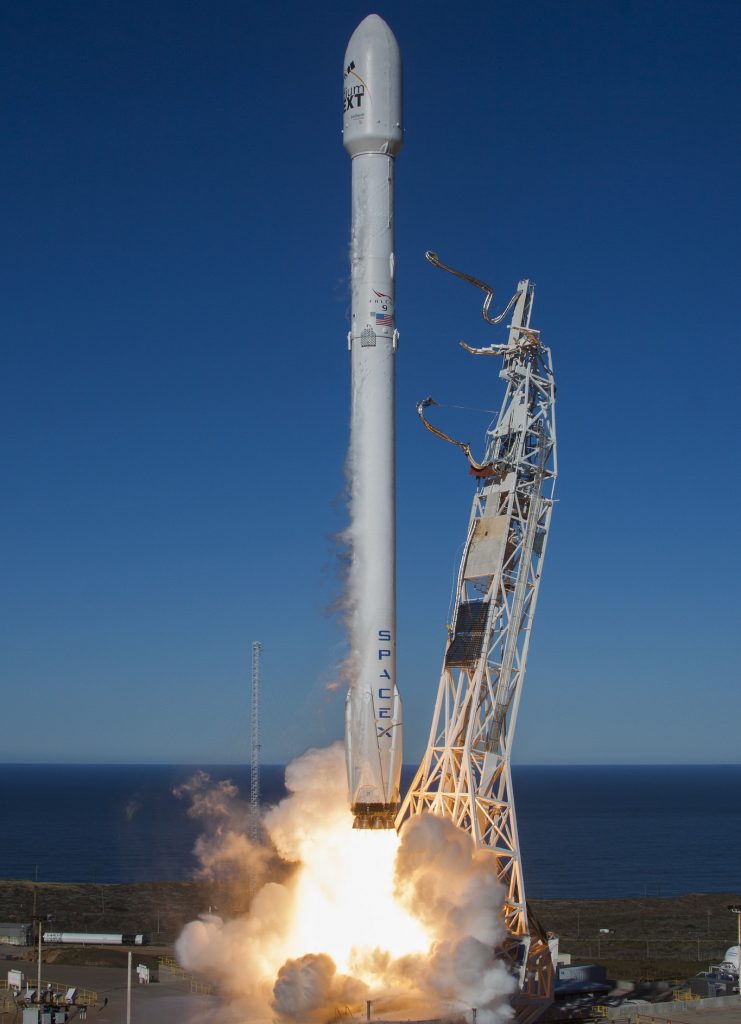
This mission will be SpaceX’s second ‘flight-proven’ Falcon 9 to take flight after the company successfully flew a booster for a second time on March 30 with the SES-10 communications satellite, marking a major achievement in the company’s efforts to make re-use routine in order to drastically cut the cost for access to space. BulgariaSat-1 will be riding on Falcon 9 booster #1029, paired with a factory-new second stage to lift the satellite into a highly elliptical transfer orbit.
Booster #1029 flew Falcon 9’s return to flight mission on January 14, blasting off from Vandenberg Air Force Base with ten Iridium-NEXT satellites that were headed into Low Earth Orbit to begin the replacement of the entire Iridium constellation with new, upgraded satellites. After dispatching the second stage toward orbit, the booster managed the first Pacific-based Drone Ship Landing, being towed to the Port of Los Angeles to begin the process of getting ready for another flight.
Pending a successful liftoff on Monday, Booster #1029 will become the first orbital launch vehicle to lift off from both coasts of the United States and SpaceX hopes to get the booster back a second time via a powered landing on the Atlantic Drone Ship ‘Of Course I Still Love You’ that has already left port to be ready for Monday’s mission.
SpaceX expects recovering and re-flying rocket stages will enable a drastic reduction in launch cost, but customers riding on the initial re-flight missions will only get minor discounts as the company recoups around $1 billion invested in the development of re-usable rocket technology and ground-based infrastructure like the landing pads and drone ships.
Opting for a ‘flight-proven’ booster comes with the advantage of being able to jump ahead on SpaceX’s launch manifest as production of new first stages has been a particular bottleneck in getting to a steady launch pace and SpaceX expects the growing inventory of returned boosters will help the company in tackling a backlog of missions that built up while Falcon 9 was still struggling to keep a steady pace.
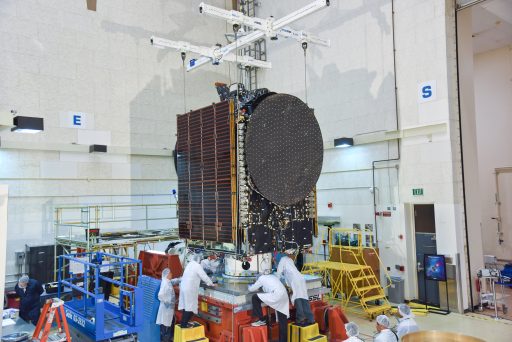
The launch contract for BulgariaSat-1 was procured by satellite builder Space Systems/Loral under a ‘delivery in orbit’ type contract which puts satellite manufacture, testing, launch and in-orbit commissioning in the hands of a single contractor with the keys of the satellite being turned over to the operator once the craft is fully operational in Geostationary Orbit. SS/L began working with SpaceX on moving BulgariaSat to a previously flown rocket before the SES-10 mission and the deal was finalized after the first re-use flight went off without a hitch, allowing BulgariaSat-1 to move ahead on the crowded SpaceX manifest.
BulgariaSat-1 weighs in at nearly 4 metric tons and hosts 33 Ku-Band transponders to deliver Broadcasting and Fixed Satellite Services, beaming HD and Ultra HD television channels to Bulgaria, the Balkan region and a large stretch of Western and Central Europe. The satellite project, valued at $235 million, has been in the making for nearly 12 years to give Bulgaria its first communications spacecraft.
>>BulgariaSat-1 Satellite Overview
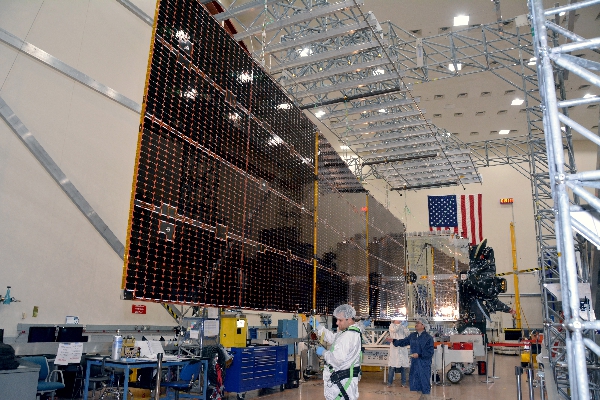
Preparations for the launch of BulgariaSat-1 started at SpaceX’s Launch Complex 39A facility within hours of Falcon 9 leaving the launch pad with the Dragon SpX-11 cargo spacecraft on June 3 when the B1029 first stage was moved into the hangar to undergo integration with the rocket’s new second stage. Both stages went through the usual journey from SpaceX’s manufacturing base in California to the McGregor, Texas facility for acceptance tests and then on to Cape Canaveral for launch operations.
SpaceX hoped to conduct the Static Fire Test for the BulgariaSat-1 mission as early as Tuesday but the activity ended up slipping first to Wednesday and then to Thursday, also impacting the planned Saturday launch date. When Falcon 9 rolled to the pad on Thursday, liftoff had already been rescheduled to Monday, in part due to the delay to the Static Fire but also due to particularly unfavorable weather conditions forecast for potential Saturday and Sunday attempts.
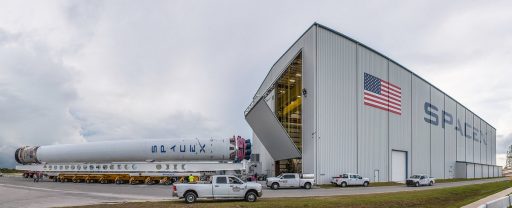
Standing tall atop the former Saturn V and Space Shuttle launch pad, Falcon 9 went through a full tanking sequence on Thursday, involving both of its stages to conduct a complete test of the rocket’s systems as well as all ground support components to avoid any surprises on launch day. Receiving over 500 metric tons of supercold Liquid Oxygen and chilled Rocket Propellant-1, Falcon 9 went through final preparatory steps like pressurizing its tanks, switching to onboard power and chilling down its engines to be ready for ignition when the mock countdown reached zero.
Flames erupted from the base of the rocket as the nine Merlin 1D engines ignited and soared to a combined thrust of nearly 700 metric ton-force with Falcon 9 firmly held in place by its Hold-Down System. The test was planned to be seven seconds in duration to capture additional performance data given this is a used first stage; new first stages typically fire for only 3.5 seconds, just enough for the engines to reach operational conditions.
After a safe shutdown was confirmed, teams went through a quick analysis of telemetry to ensure the burn reached the expected duration and all required performance parameters were captured.
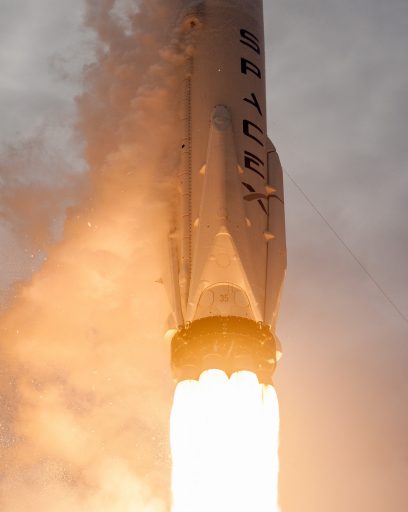
This was confirmed by SpaceX through Twitter and engineers planned to de-tank the rocket later in the evening to be ready to move the vehicle back into the hangar for payload integration as new SpaceX policy dictates the Static Fire to be performed without the payload following last year’s testing mishap that claimed the Falcon 9 booster and an Israeli-owned communications satellite.
Falcon 9 will roll up the ramp again on Sunday and take its vertical liftoff position for a multi-hour checkout campaign before proceeding into fueling for liftoff during a two-hour window on Monday. The rocket’s first stage will be in action for two and a half minutes before the MVac-powered second stage takes over for a pair of burns, first into a Low Earth Parking Orbit ahead of a brief second burn around the equator to deliver BulgariaSat-1 to its intended Geostationary Transfer Orbit with spacecraft separation a little over half an hour after launch.
For the first stage, separation marks the start of its second return trip from the edge of space, though this time it will be coming in slightly hotter than on its first landing given the higher energy involved in a Geotransfer mission. The OCISLY Drone Ship will be located around 680 Kilometers south east of LC-39A, waiting for the arrival of the first stage around eight minutes after launch.
Monday’s mission is the first of three Falcon 9 flights expected in a period of less than three weeks from Florida and California. A second SpaceX team at Vandenberg Air Force Base is gearing up for the static fire test of another Falcon 9 rocket as early as Tuesday in preparation for a NET June 25 launch of the second batch of Iridium-NEXT satellites. At Florida’s Space Coast, the BulgariaSat-1 launch is expected to be followed after around two weeks by the launch of the Intelsat-35e high-throughput telecommunications satellite.

